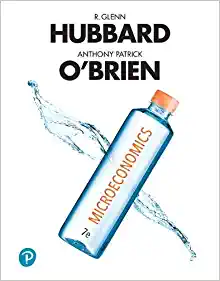Question
Chapter 4 (The value of common stocks) 1.The logic of discounted cash flow suggests that the value of a share of stock is equal to
Chapter 4 (The value of common stocks)
1.The logic of discounted cash flow suggests that the value of a share of stock is equal to the expected future dividends per share.
A.True
B.False
2.Most public companies pay dividends to their shareholders. One of the measurements that investors pay very close attention to is the dividend yield. This number is determined as follows:
A.Earnings per share divided by the price of the stock
B.Dividends divided by the book value of the company
C.Dividends divided by beta
D.Dividend per share divided by price of a share of stock
3.Sales of shares of stock to raise new capital, often referred to as an initial public offering (IPO,) are said to occur in the primary market. The day to day exchange of shares in the public market is said to occur in the secondary market.
A.True
B.False
4.The book value of a company can be defined by:
A.The difference between assets and liabilities
B.Net working capital
C.The debt/equity ratio
D.The stock price per share
5.Book value is not considered a very good indicator of the value of a company because:
A.Fixed assets are expressed at historical costs less depreciation
B.Intangible costs may not be recorded at all
C.Land is expressed at historical cost
D.Inventory is expressed at lower of cost or market
E.All the above
F.None of the above
6.The Price/Earnings ratio is a very important measurement to investors. What two factors are considered in its calculation?
A.Total inventory and Earnings per share
B.Book value and Market Value
C.Earnings per share and stock price
D.Beta and dividend yield
7.Assume the price of a share of stock at the beginning of the year to be $49.43. At the end of the year a dividend of $2.00/share is paid. What is the dividend yield?
A.4.1%
B..7%
C.1.4%
D.5.2%
8.The payout ratio is the portion of earnings that are paid out to shareholders. What is the term given for the inverse of the payout ratio?
A.Current ratio
B.Earnings per share
C.Dividend Yield
D.Plowback ratio
9.Assume that the Return on Equity (earnings/total stockholder's equity) in your company is .25. Also, assume that during this past year your company enjoyed a $100,000 net profit of which $60,000 was paid out to shareholders as a dividend. Given the preceding, what is the dividend growth rate of your company?
A.5%
B.7.5%
C.10.0%
D.15.0%
10.All stocks in an equivalent risk class are priced to offer the same expected rate of return.
A.True
B.False
11.Company X is expected to pay an end-of-year dividend of $5 per share. After the dividend its stock is expected to sell at $110/share. If the market capitalization at rate is 8%, what is the current stock price?
A.$100.00
B.$106.48
C.$96.48
D.$102.00
12.Assume that the dividend growth rate of your company is 8% and your required rate of return is 5%. If dividends per share was $10, what would be the share price.
A.$300.00
B.$333.33
C.$363.33
D.$500.00
Chapter 5 (Net Present Value and Other Investment Criteria)
13.The author of our textbook considers NPV over Internal Rate of Return as more effective method for measuring the financial feasibility of a project
A.True
B.False
14.When companies choose to utilize the payback method when evaluating projects, they run the risk of excluding cash flows that occur AFTER the payback goal (i.e. three years) has been met
A.True
B.False
15.The definition of Internal Rate of Return is the discount rate at which the NPV of a series of cash flows is greater than zero
A.True
B.False
16.What is the Internal Rate of Return for the series of cash flows noted below?
Year #0 - ($200,000)
Year #1 - $300,000
Year #2 - $100,000
Year #3 0 ($150,000)
A.15%
B.25%
C.45%
D.50%
17.The Internal Rate of Return rule is to accept an investment project if the opportunity cost of capital is less than the internal rate of return.
A.True
B.False
18.The NPV of a project depends on the:
A.The company's choice of accounting method
B.Managers tastes and preferences
C.The project's cash flows and the opportunity cost of capital
D.The profitability index
19.Driscoll Company is considering investing in a new project. The project will need an initial investment of $2.4Million (Year 0) and generate $1.2Million (after-tax) for three years. What is the Internal Rate of Return?
A.14.5%
B.18.6%
C.20.3%
D.23.4%
20.Assume the same facts as in #47, and further assume an 8% discount rate, what would be the NPV to the cash flows?
A.$3,092,516
B.$2,956,456
C.$692,516
D.($692,516)
E.$0
Step by Step Solution
There are 3 Steps involved in it
Step: 1

Get Instant Access to Expert-Tailored Solutions
See step-by-step solutions with expert insights and AI powered tools for academic success
Step: 2

Step: 3

Ace Your Homework with AI
Get the answers you need in no time with our AI-driven, step-by-step assistance
Get Started


